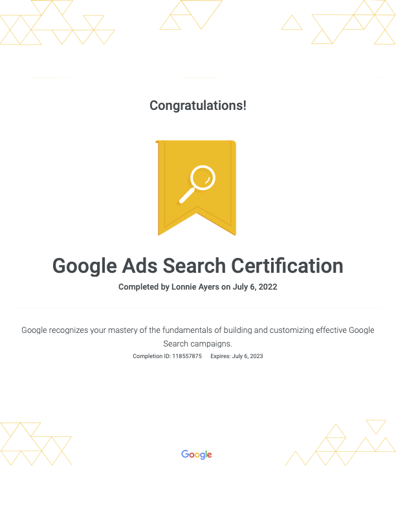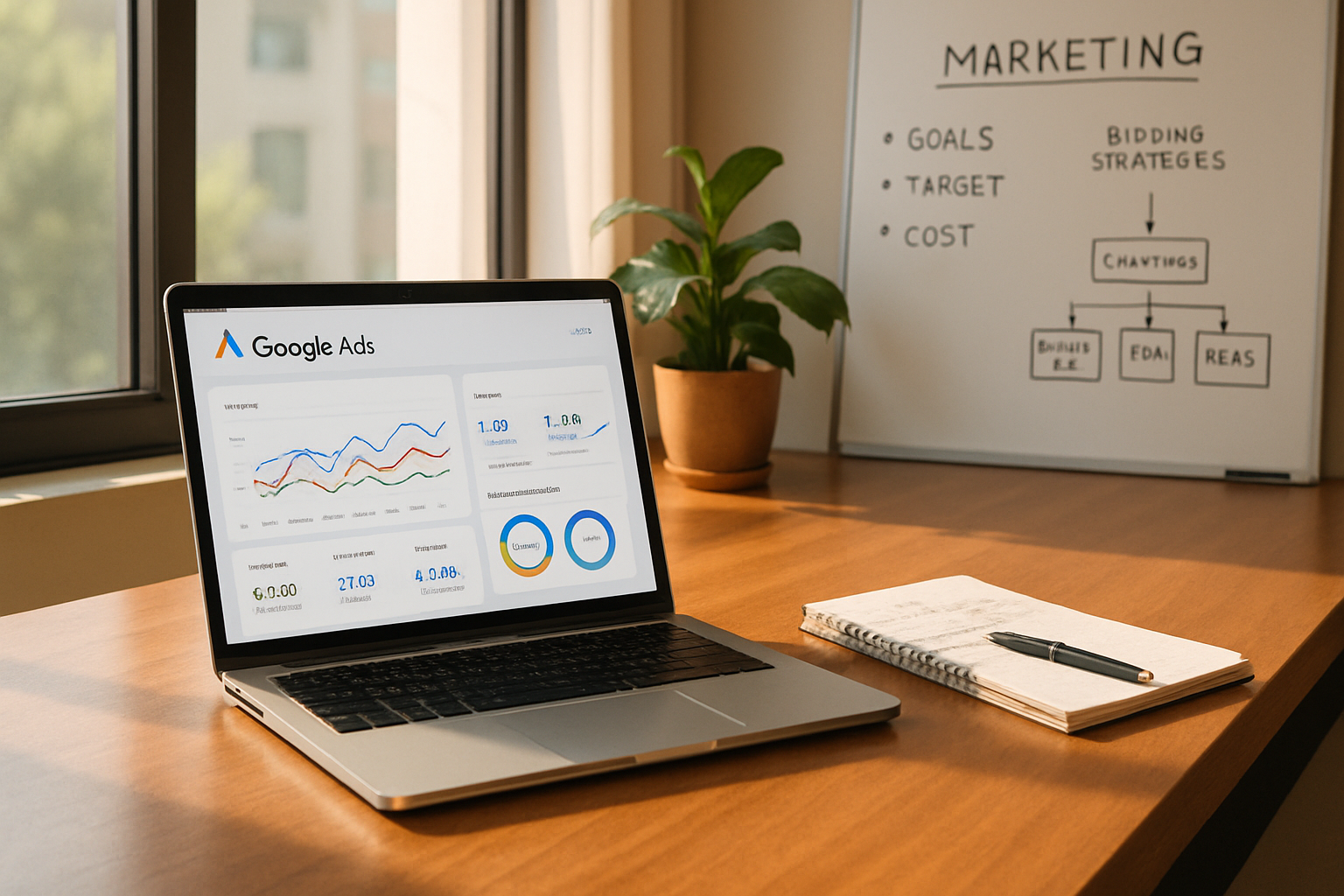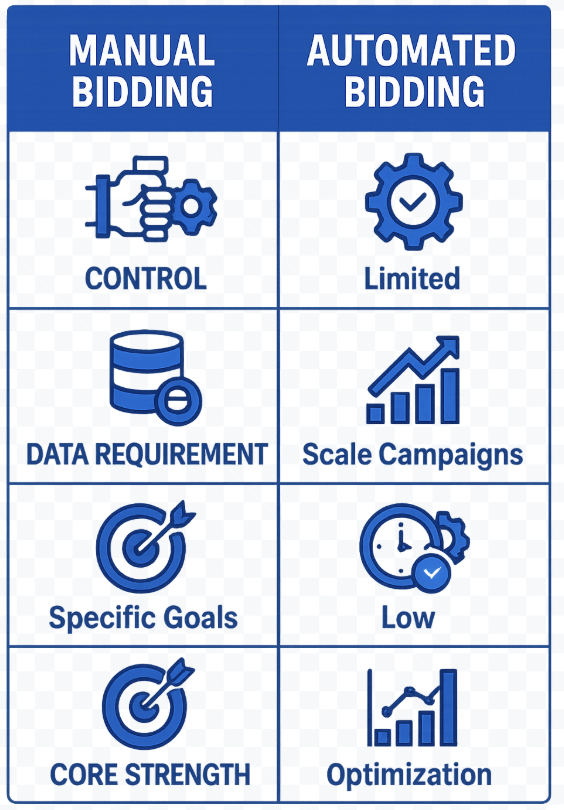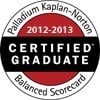You're spending good money on your Google Ads campaigns. But is that money working as hard as it could be? A huge piece of that puzzle is your bidding strategy, especially your approach to automated bidding.
Having managed millions of dollars in ad spend, I've seen how the right choice can make or break a campaign. The decision often comes down to one question. Should you control every bid yourself, or should you let Google's powerful system take over?
You will learn the key differences between manual and automated bidding in paid media. We will explore the advantages, the disadvantages, and how to choose what is right for your business. Let's find the best path for your advertising.
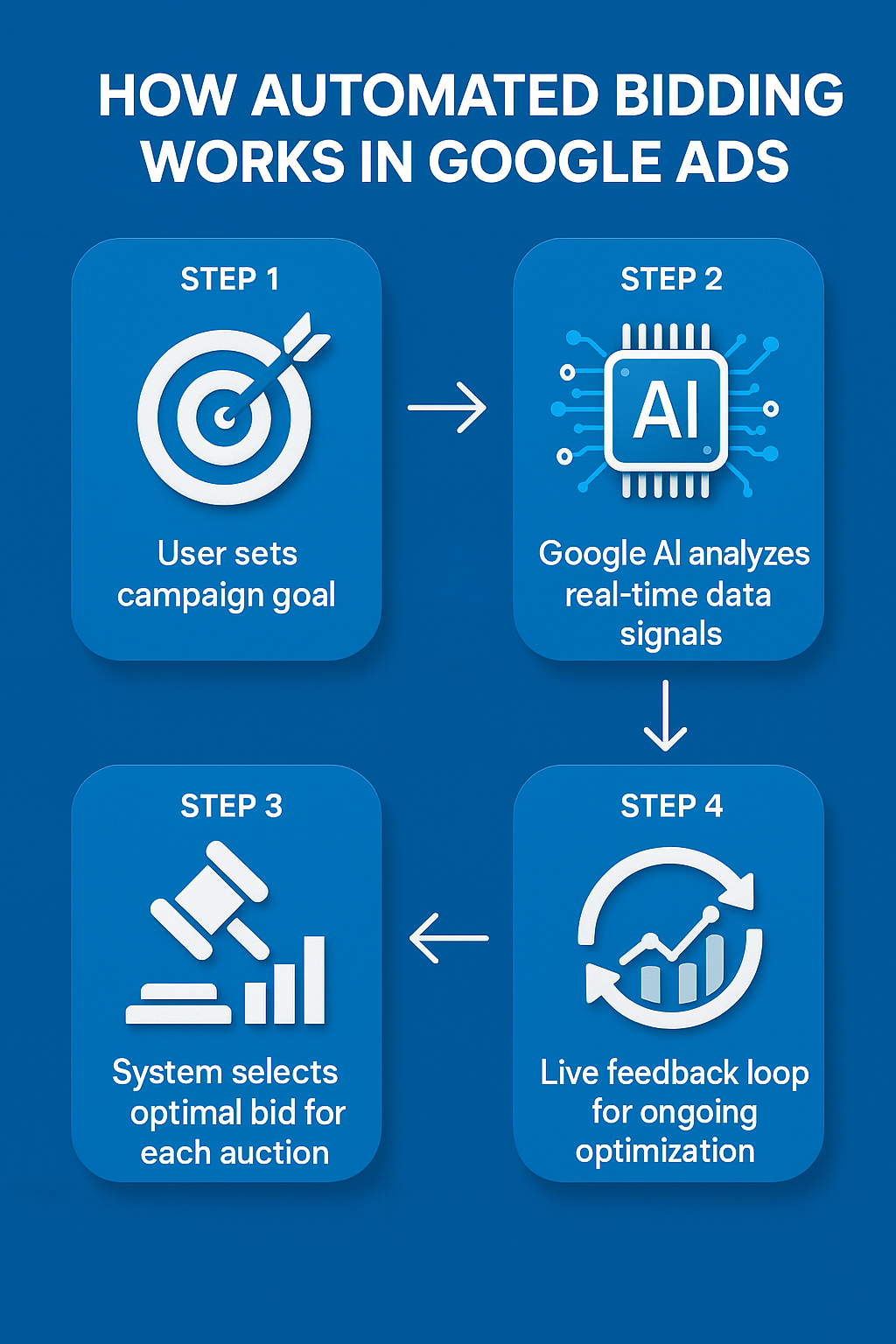
What's the Big Deal with Manual Bidding?
Manual bidding is exactly what it sounds like. You tell Google Ads the absolute most you are willing to pay for a single click. This is your maximum cost-per-click, or max CPC.
With this approach, you have direct control over every keyword in your account. Before the rise of sophisticated automated bidding, this was the standard for digital advertising.
Advertisers needed that granular control to manage their advertising budget effectively.
This hands-on method meant you could decide to pay more for a high-intent keyword. A term like "emergency plumber near me" is worth more than "how to fix a leaky faucet." Manual bidding let you make those strategic calls yourself to find the optimal bid.
The Good Parts of Manual Bidding

Why would anyone still choose to do all this work by hand? There are actually some very good reasons. Control is a powerful thing, especially when it involves your money:
- Complete Control Over Your Costs. When advertisers set a hard limit on every click, there are no surprises on the monthly invoice. For businesses with a strict advertising budget, this can bring real peace of mind and prevent overspending.
- Great for Testing New Ideas. When you launch a new campaign, you need clean data. Manual bids let you see the true cost of traffic without an algorithm influencing the results, providing a clear baseline for data analysis.
- You Can Prioritize Your Spending. Not all search terms have the same value. Manual bidding lets you push your budget towards the keywords that actually drive sales or quality leads, allowing for an efficient allocation of resources.
- It Protects Your Budget. Sometimes, automated systems can become aggressive and push your click costs up unexpectedly. Setting manual bids acts as a safety net, ensuring you never spend more per click than the maximum you set.
- Immediate Bid Changes. If you spot a keyword that is suddenly performing well, you can immediately adjust bid amounts to capitalize on the opportunity. There is no learning period or delay, giving you instant responsiveness to market changes.
The Downsides of Manual Bidding

While having that level of control is beneficial, it is not always a good thing. It comes with some significant drawbacks. It is important to see the full picture before deciding on a bid strategy:
- It Takes a Lot of Time. Managing bids for hundreds or thousands of keywords is a full-time job. You have to constantly watch performance and make manual bid adjustments. That is time you could be spending on other parts of your business.
- You Can't React in Real Time. The ad auction changes every second, influenced by countless factors. Your competitor might raise their bid while you are in a meeting, and you would not know until you check your reports later.
- It's Very Hard to Scale. A small account with a few campaigns is manageable. But what happens when your company grows? Manually managing bids for a large business with many products becomes nearly impossible to do well for an ongoing campaign.
- Missed Opportunities. You cannot possibly analyze all the available signals for every single auction. Automated systems leverage real-time data on user behavior, location, and device, meaning manual bids often miss out on valuable clicks an algorithm would have identified.
When Does Manual Bidding Still Make Sense?
So, manual bidding is not obsolete. It just has a very specific job now. It is a tool for a particular set of circumstances in your Google Ads account.
Consider using manual bids in these situations:
- You are launching brand-new campaigns and need baseline performance data.
- You have a very tight advertising budget and cannot afford any risk of overspending.
- Your account is small, perhaps with just one or two active campaigns and a limited keyword set.
- You operate in a tiny niche where you know the click values better than anyone.
Once you have collected enough conversion data, you can transition to a more advanced approach. An automated bid strategy can then use that historical information to grow your account. This is a very common and effective path to success in digital advertising.
So, What Is This Automated Bidding Everyone Talks About?
Automated bidding, which Google often calls Smart Bidding, is the opposite approach. You hand the reins over to Google's machine learning and its advanced algorithms. Instead of setting bids yourself, you choose a business goal, or one of your campaign objectives.
Your campaign goals could be getting more conversions or achieving a certain return on ad spend. Google's system then works to hit that target. It adjusts your bids for every single auction using real-time data to find the optimal bid.
Google analyzes billions of signals for each search to help optimize bids. This includes factors like the user's device, location, time of day, and past browsing behavior. If a click looks more likely to lead to a sale, Google bids higher for that auction, and if it looks less likely, it bids lower.
Types of Automated Bidding Strategies
Pro-Tip: Before enabling any automated bidding strategy, set up robust conversion tracking in Google Ads. Inaccurate or missing conversion data will cause the algorithm to optimize for the wrong outcomes—resulting in wasted spend and poor campaign results.
Google Ads offers several automated bidding strategies, each designed for different campaign goals. Choosing the right one is crucial for success. Here are some of the most common options available.
- Maximize Conversions: This strategy tells Google Ads to get you the most conversions possible within your specified budget. The system works so ads automatically appear for users likely to convert. It does not focus on the cost per conversion, but rather the total number of them.
- Target CPA (Cost Per Acquisition): With this bid strategy, you set a target price you are willing to pay for one conversion. Google Ads then automatically sets your bids to try and get as many conversions as possible at or below that target CPA. This is great for lead generation campaigns with a clear value per lead.
- Maximize Conversion Value: This is for advertisers who track the revenue associated with their conversions. Instead of focusing on the number of conversions, this strategy aims to generate the highest possible total conversion value within your budget. It is ideal for e-commerce stores with products at different price points.
- Target ROAS (Return On Ad Spend): If you want to achieve a specific return for every dollar you spend, Target ROAS is the right choice. You set a target return, such as 400% (a $4 return for every $1 spent), and Google will adjust bid amounts to hit that goal. This requires robust conversion value tracking to work properly.
- Maximize Clicks: This strategy is focused on driving as much traffic to your website as possible within your budget. It is not concerned with conversions but with click volume. It can be useful for brand awareness campaigns or when you need to quickly gather traffic data.
- Enhanced CPC (ECPC): This is a hybrid strategy that combines manual bidding with a layer of automation. You still set maximum CPC bids, but you allow Google to increase or decrease your bids in auctions it deems more or less likely to lead to a conversion. It provides a bit of automated help without giving up full control.
Why You'd Want to Use Automated Bidding
Letting a machine handle your bids might feel strange at first. The benefits can be massive for your business. It is about working smarter, not harder, to achieve your campaign objectives.
The biggest advantage is the time you save. You no longer need to check hundreds of individual keyword bids every day. This frees you up to work on ad copy, landing pages, and overall marketing strategy.
More importantly, it helps optimize bids automatically. Google's advanced algorithms can see patterns that a human never could. It gets better and better over time as it performs data analysis on what works for your account, leading to more data-driven decisions.
The Catch with Automated Bidding
This sounds great, but automated bidding is not a magic wand. It needs the right conditions to work properly. Failure to provide these can lead to poor performance and wasted spend.
First, it needs data, and lots of it. For the system to learn, you must have solid conversion tracking set up. Without that data, Google's AI is just guessing, and it might guess wrong with your money.
Second, you give up some direct control. You cannot set a hard cap on your CPCs in the same way you do with manual bids. You have to trust the system to work towards your bigger goal, even if some individual clicks cost more than others.
Manual vs. Automated Bidding: The Head-to-Head Comparison
Pro-Tip: When testing manual versus automated bidding, use Google Ads Experiments to split traffic between strategies. This approach provides true side-by-side performance data, helping you choose the right bidding method for your goals without risk to your main campaigns.
Let's break down the key differences in a simple way. Seeing them side-by-side can help clarify which path is better for you right now in your paid media efforts.
| Feature | Manual Bidding | Automated Bidding |
| Control | Full control over CPCs | Limited (you set the goal) |
| Data Requirement | Low (can start with zero data) | High (needs conversion history) |
| Best Use Case | Small budgets, testing, new accounts | Scaling, large accounts, optimizing |
| Time Investment | High (needs daily attention) | Low (the system manages bids) |
| Core Strength | Budget protection and data gathering | Efficiency and real-time optimization |
How to Avoid Common Bidding Mistakes
I have seen people make the same mistakes over and over. They often come from a misunderstanding of how these bidding systems work. Knowing them ahead of time can save you a lot of frustration and money.
The biggest mistake is jumping into automated bidding without accurate conversion tracking. Google's algorithm is powerful, but it is not a mind reader. If you do not tell it what a conversion is, it will optimize for the wrong thing, like getting low-quality clicks.
Another common error is staying with manual bidding for too long. It feels safe and comfortable. But clinging to it can seriously limit your growth once you have a good amount of conversion history for the algorithm to use.
Finally, avoid changing your bidding strategy too often. Every time you switch, Google's system has to start its learning period all over again. Give each strategy at least a few weeks to find its footing before you judge its performance.
Pro Tips for Getting Automated Bidding Right
So how do you use these strategies like an expert? It is not about picking one and forgetting it. The best approach often involves using both at different stages of your campaign.
A great method is to start new campaigns with manual bidding or Enhanced CPC. Use it to collect about a month of clean, unbiased performance data. This gives you a solid baseline of what things cost and which keywords convert.
Once you have at least 30 conversions in a 30-day period, switch to an automated strategy. The data you collected will give Google's AI a massive head start. It will learn much faster and perform better right from the beginning, helping you make smarter data-driven decisions.
Do not be afraid to test different bidding strategies against each other. Google has a built-in Experiments tool that lets you split your campaign traffic. You can run one half on a Target CPA strategy and the other half on Maximize Conversions to see which one delivers better results for your specific campaign goals.
Conclusion
When it comes to your Google Ads account, there is not a single perfect answer. The right bidding strategy truly depends on your goals, your budget, and how much data you have. Neither option is universally better than the other; they are just different tools for different jobs in digital advertising.
Manual bidding is your tool for control and careful testing. It's perfect when you're starting out or need to protect a small advertising budget. Think of it as steering the ship yourself, watching every wave and making manual bid adjustments as needed.
On the other hand, a good automated bid strategy is your engine for efficiency and scaling. It is ideal when you have conversion history and are ready for growth. The smartest advertisers I know often use both, starting with manual bids and then graduating to automated bidding to expand their success across their ongoing campaign efforts.
Need Expert Google Ads Help?
We are team of top-level marketing experts, who also happen to be Certified Hubspot Inbound Marketing and Sales experts. We don't just help you set up and run Google Ads, though we do that, we help you set up run lead generation and sales systems. Please our book a meeting service to get started.
